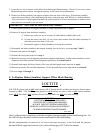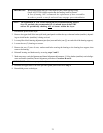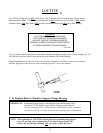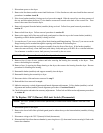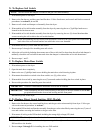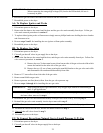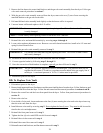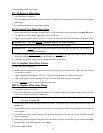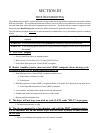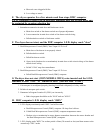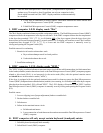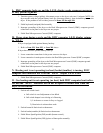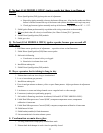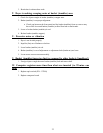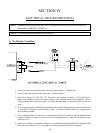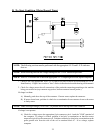
28
SECTION III
TROUBLESHOOTING
The information provided is a quick reference to help isolate the most probable components associated with the
difficulty described. The experienced technician realizes, however, that a loose connection or broken or shorted
wire may be at fault where electrical components are concerned. . . not necessarily the suspect component itself.
Electrical parts should always be checked for failure before being returned to the factory.
The information provided
should not be misconstrued as a handbook for use by an untrained person in making
repairs.
IMPORTANT: When replacing blown fuses, the replacement must be of the exact rating as the fuse being
replaced.
WARNING: All service and troubleshooting should be performed by a qualified professional.
WARNING: While making repairs, observe all safety precautions displayed on the dryer or specified in
this manual.
A. No L.E.D. Display
1. Service panel fuse blown or tripped breaker.
2. Blown control circuit fuse (3AG 1/2-Amp [Slo Blo] Fuse).
3. Failed Dual Microprocessor Control (DMC) computer.
B. Basket (tumbler) motor does not start, DMC computer shows drying cycle
in progress and L.E.D. motor indicator dot is on
1. Dual Microprocessor Control (DMC) computer indicator is on
a. Failed motor contractor or relay.
b. Failed motor.
2. Dual Microprocessor Control (DMC) computer indicator is off (and L.E.D. display does not read "door")
a. Failed Dual Microprocessor Control (DMC) computer.
3. Loose tumbler and basket belt (check tension and adjustment).
4. Tumbler and basket belt jumped off of motor or idler shaft.
5. Broken tumbler and basket belt.
C. The dryer will not stop, even with no cycle (L.E.D. reads "FILL") in progress
1. Failed motor contactor or relay.
D. The dryer operates for a few minutes, and with the DMC computer motor
L.E.D. indicator dot on the motor stops, and ten after a period of time restarts
on it's own
1. Motor is overheating and tripping out on its' internal overload



